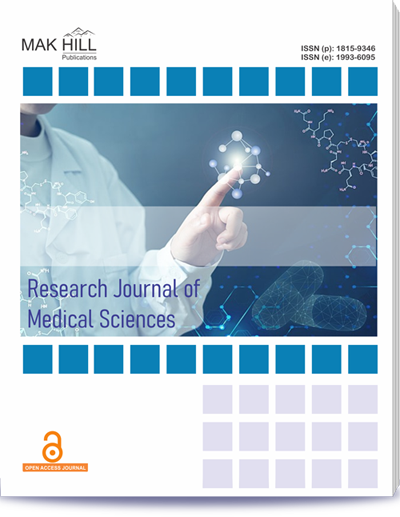
Research Journal of Medical Sciences
ISSN: Online 1993-6095ISSN: Print 1815-9346
Abstract
The escalating rate of caesarean sections (CS) worldwide, including South Asia, has become a pressing public health concern. This retrospective record based study study aimed to investigate the factors contributing to the rising rates of CS in Central India. A total of 320 antenatal patients admitted to the Obstetrics and Gynecology Department of a tertiary care hospital were included. Demographic characteristics, nutritional status, indications for CS and maternal and fetal outcomes were analyzed. The study revealed a CS rate of 36.35%, exceeding the WHO's recommended threshold of 15% for underdeveloped nations. Common indications for CS included cephalopelvic disproportion (CPD), eclampsia and fetal distress. Maternal complications occurred in 18.09% of cases, with post‐operative fever and surgical site infection being the most frequent. Fetal outcomes were generally favorable, with term births and healthy birth weights predominating. Strategies to reduce CS rates should focus on personalized indication criteria, standardized protocols and promoting vaginal birth after cesarean (VBAC) to minimize maternal and neonatal morbidity and mortality.
How to cite this article:
Shipra Singh, Vandna Singh, Amita Mehta and Ayushi Jaiswal. Factors that Contribute to the Increasing Incidence of Primary Caesarean Section Deliveries‐Retrospective Study.
DOI: https://doi.org/10.36478/10.59218/makrjms.2023.12.540.545
URL: https://www.makhillpublications.co/view-article/1815-9346/10.59218/makrjms.2023.12.540.545